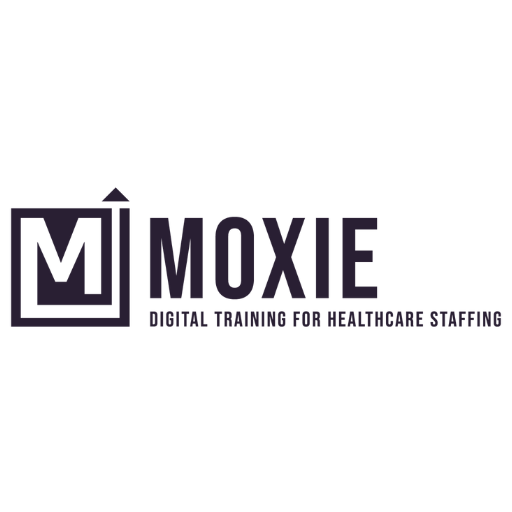By: Shari Dalton
I did a Live Facebook session a few weeks back and talked about what that first year looks like as a new recruiter. What types of strategies should you have in place to help grow a solid desk of qualified travelers, and the effort it takes to be successful. I received a lot of follow up questions and wanted to share the information with all of you.
Recruiting, like most things in life, takes practice and intention to be successful. It’s not a sprint, it’s a marathon. Think about sports-basketball players don’t just wake up one day and win championships. They focus on winning all year, even during the off season. They practice every day to be the best. Each day they may practice something different so they are great, well-rounded players. They have goals and tasks each day to help them win game after game, and if they play their cards right and consistently execute, they’ll reap the rewards of that.
Not all agencies are created equal. Growth and ramp up patterns can be different for each agency depending on the resources available to their team of recruiters. For example, there are some agencies where recruiters are responsible for sourcing and recruiting candidates. Meaning, they’ve got to find their own candidates to recruit via social media, job boards, etc. Then, there are those agencies where recruiters work a dual role-the recruiters are often the ones developing relationships with and going after contracts with hospitals or VMSs and they are the ones responsible for filling those open positions.
Other agencies purchase leads, or have marketing teams that create great content so candidates come to them. And some agencies have two different sales teams-one dedicated only to recruiting and one dedicated to business development with client facilities.
Regardless of the type of agency you work for, your strategies can still be approached in the same way. Here are some helpful steps to creating a successful first year recruiting and beyond.
- Determine what your big goals are-oftentimes agencies expect their 1 year recruiters to have “X” amount travelers on assignment with them. For the purposes of this article, we’ll say 20. So by the end of year 1, you are expected to be at 20 travelers on assignment.
- Once your big goal is determined, take that and break it into quarterly goals. In order to hit that 20 mark, you’ve got to hit milestones along the way to get there. By 3 months in, I want to have 3-5 travelers working. Month 6, I want to have 8-10 travelers working. Month 9, 14-16. And month 12, 20.
- From there let’s break it down even further. If I want to grow by 3-5 travelers each quarter, what does that mean? Well, I can either recruit and place 3-5 travelers or more each quarter, or I can focus on retaining some travelers and adding more. A good average retention rate for that first year is 60%. Let’s be honest, not all of your first travelers are going to be rock stars, and even if they are, there’s a chance that you’ll goof something up-it happens! Relax! Going into year two, you’re goal should be 80% retention.
- Now, how do I find and recruit to get those travelers? This is where you start to create mini-goals. Think about things like, how many submittals do I need to have to get to those numbers? How many candidates do I need to have in my pipeline? We know in today’s market that for every 8-10 submittals, a recruiter is likely to get 1 signed contract. So if your goal is to have 3 placements in a month, you’ve got to average approximately 30 submittals. When considering this, you’ve got to look at your odds. If you need 30 submittals, you can go about this a few ways. A.) You can find 30 unique candidates and submit them for 1 job each (good luck with that) OR, B) You can find candidates who are open to multiple locations. If you have 3 candidates and they are open geographically and have reasonable pay expectations, you will likely be able to submit them to multiple locations. The key here is spending the time to find those candidates versus spinning your wheels on candidates who you have a limited amount of options for. If you have a candidate that’s closed on location and you may only have 1-2 jobs to submit them to, you know that statistically speaking, you’ve got 15% chance or less of placing them on a contract. Does that seem like time well spent? Remember, while having 30 candidates in your pipeline might seem impressive, if you aren’t able to get them working, you may as well have zero.
- Knowing that you need to find top quality candidates that are open to location and have reasonable pay expectations isn’t easy. This is where you would begin to create additional mini-goals. A.) I want to create 2 new profiles this week, in order to do this, I am going to need to have 3-4 great conversations and I am going to need to receive 2 new resumes this week. B.) I am going to need to make “x” amount of calls this week to find 3-4 candidates to have great conversations with. So Monday I need to reach out to ER nurses with compact licenses, Tuesday I’ll need to reach out to LDRP nurses with WA licenses, and so on and so forth.
The big take-away from all of this is that it’s great to have big goals in mind, but if you aren’t taking steps each quarter, month, week and day to help you attain those goals, you’ll never hit your target. Coming into work each day and making a decision to “pound out some calls” or sending mass text or emails isn’t going to be effective unless you’ve got a strategy in place and you’re performing each task with intention.
What are some things you’re doing each day to help you meet your goals?





